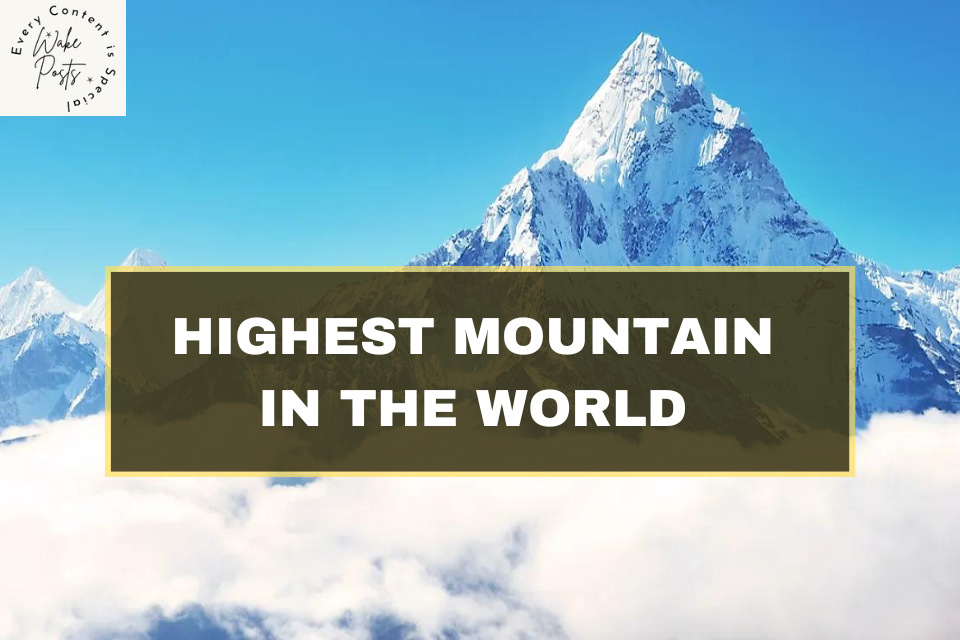The tallest peak in the world, Mount Everest, is located in Nepal’s Himalayas 8,848 meters. You probably already knew that. In the end, most individuals who are asked to name a peak globally will respond with Mount Everest. Many people are also aware of K2, the second-highest peak in the world, located on the border between China and Pakistan. Still, considerably fewer are aware of Kangchenjunga, the third-highest mountain in the world. Also, how to spell it. It’s not nearly as easy as “K2,” which is inevitable. So, how many of the world’s tallest mountains are you familiar with?
Why Do Mountains Exist?
Mountains are rocky masses in the Earth’s crust that have naturally formed towering peaks. Mountains can be built into a mountain belt, a series of features, or they can stand alone as a single feature. The scale of a mountain is not determined by geological science. Smaller mountains are sometimes referred to as hills. The tectonic movements of the Earth create their size or name. The numerous types of mountains and their formation will be covered in this session.
The Formation of Mountains
All mountains are created by volcanic activity, tectonic forces, or a mix of both. Mountains are created by tectonic forces driving tectonic plates apart, pushing them together, or grinding two plates against one other as they pass past one another. To form volcanoes, volcanic processes cause magma to push upward through the crust as lava erupts at the surface. They are frequently referred to as mountains due to their size, height, and capacity to create chains.
The Top 15 Highest Mountains, Ordered by Altitude
Although Everest frequently receives all the attention, Asia’s whole continent is covered with enormous mountains. Asia is home to all 100 of the world’s highest mountains. Except for Everest, none of the seven summits—the tallest mountains on each continent—are included in this list. Finding someone knowledgeable about the world’s sixth, seventh, or eighth tallest mountains is highly uncommon.
So let’s get started. Learn about the top 15 tallest mountains in the world with our assistance. Let’s assist you in using your phone beneath the table and the suspect Wi-Fi to cheat on the pub quiz you’re likely taking right now. Don’t be sorry. Everyone is engaged in it. Here are the top 15 highest mountains on Earth, in order of height:
1. Mt. Everest in Nepal (29,029 feet/8,848 meters)
The tallest mountain in the world is Mount Everest. Mount Everest is a mountain in Nepal that rises 8,848 meters (29,029 feet) above sea level and is situated on the Nepal-China border. In Nepal and Tibet, Everest is referred to as Sagarmatha and Chomolungma, respectively. It is one of the more straightforward mountains to climb, even though it is the highest peak and draws many climbers of different ability levels. In 1953, a British expedition led by Tenzing Norgay, a Nepalese Sherpa, and Mr. Edmond Hillary of New Zealand became the first to summit Mount Everest via the South Col route. Many people set out to climb Mount Everest over their lifetime.
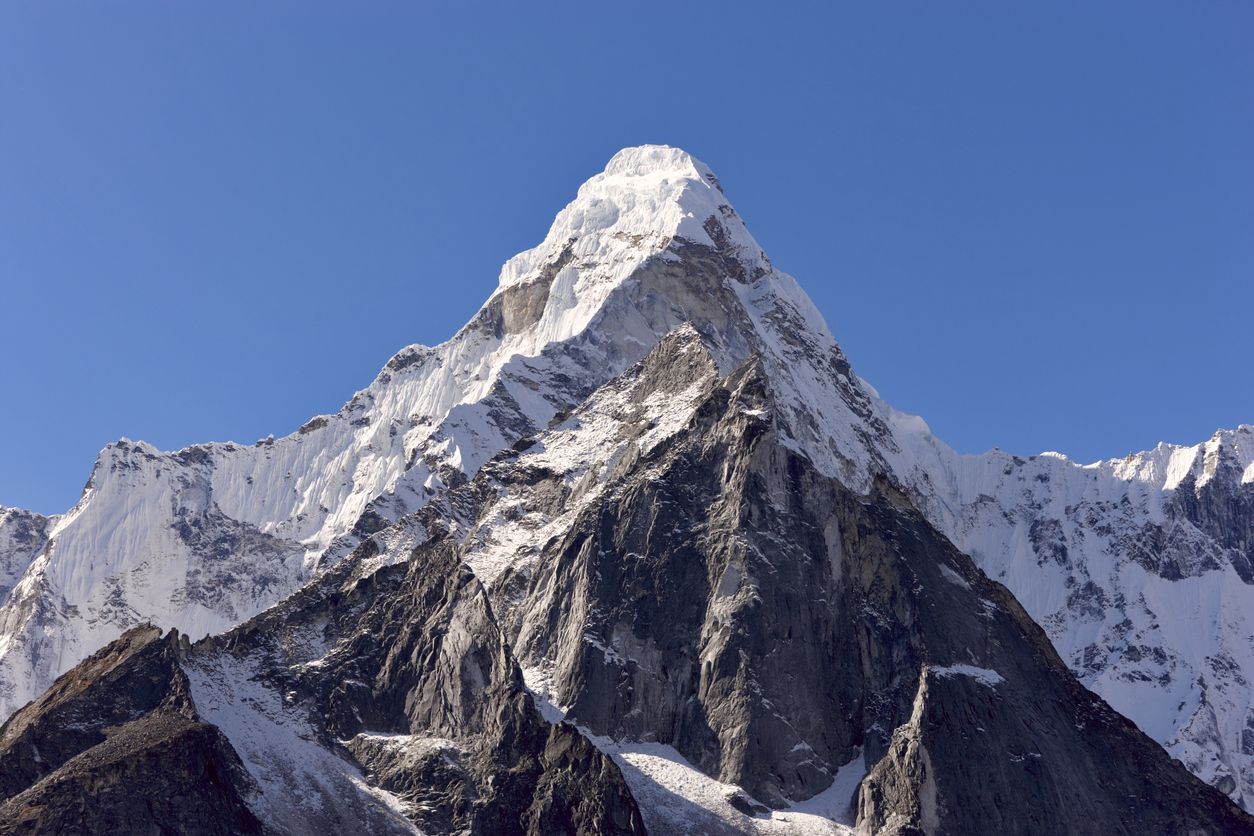
2. Pakistan’s Mt. K2 (8,611 m/28,251 ft)
After Mount Everest, Mount K2 is the highest mountain on Earth. In Pakistan’s Karakoram Range of the Himalayas, Mt. K2 is located. The second peak, K2, is the highest in Pakistan and the Karakoram Range. There are several peaks in the Karakoram range. Due to its treacherous ascent and second-highest death rate among the “eight-thousanders” for climbers, K2 is nicknamed the “Savage Mountain.” One person has died trying for every four who have reached the peak. Under Mr. Ardito Desiofinally, an Italian expedition team successfully did the first climb of K2. On July 31, 1954, Mr. Lino Lacedelli and Mr. Achille Compagnoni of his team successfully climbed to the top of K2 (8611m/28,251ft) via the Abruzzi Spur climbing route.
3. Mount Kangchenjunga (28,169 feet/8586 metres)
With an elevation of 8,586 meters, Mount Kangchenjunga is the third-highest peak in the world (28,169 ft). It is situated in Nepal, right on the border with India. As the highest mountain in India, Kangchenjunga is the name of the surrounding Himalayan region and translates to “The Five Treasures of Snows” since it encompasses five summits. Gold, silver, jewels, grain, and sacred texts represent God’s five stores that are represented by the riches. The tallest peak on Earth to the east is called Kanchenjunga. On May 25, 1955, Mr. Joe Brown and the British Expedition team’s George Band ascended this summit.
4. Nepal’s Mt. Lhotse (27,940 feet/8,516 meters)
The fourth-highest peak in the world is Lhotse. The South Col. Serves as a link to Everest. Lhotse is the Tibetan name for “South Peak.” Lhotse Middle (East) is 8,414 meters (27,605 feet), and Lhotse Shar is 8,383 meters above sea level, in addition to the main summit at 8,516 meters (27,940 feet) above sea level (27,503 ft). It is situated where Tibet (China) and Nepal’s Khumbu area converge. On May 18, 1956, Swiss climbers Fritz Luchsinger and Ernst Reiss made the first ascent of Mount Lhotse. The enormous and stunning South face of Mount Lhotse is becoming well-known. The South Face is the steepest face of this magnitude in the world, rising 3.2 km and measuring 2.25 km in width. Few people attempt to climb Lhotse, which is regarded as one of the most challenging mountains.
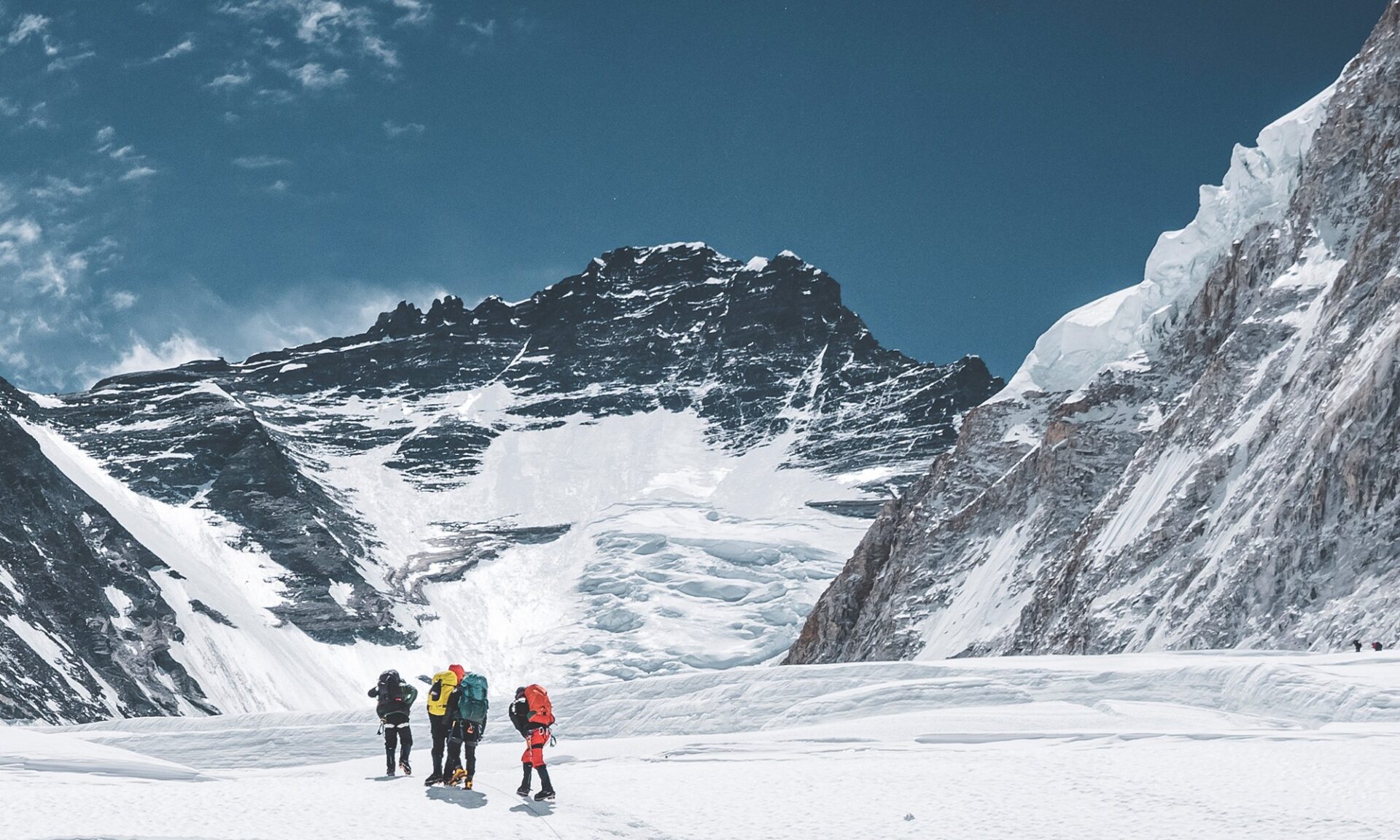
5. Mt. Makalu (27,825 ft/8,481 m), Nepal
With an elevation of 8,481 meters, Mount Makalu is the fifth-highest peak in the world (27,825 ft). It is situated on the border between Nepal and China, 19 kilometers (12 miles) southeast of Mount Everest. In the spring of 1954, a team of Americans led by William Siri made the first ascent of Mount Makalu. The two primary climbing routes on Mount Makalu are the South East Ridge and the Northwest Ridge. It is situated in the eastern region of Nepal at the coordinates of 27°53’21” N and 87°05’27” E.
6. Mt. Cho Oyu (26,906 ft/8,201 m.)
The sixth-highest peak in the world is named Mount Cho Oyu. It is situated in Nepal, close to the border with China. In Tibetan, Cho Oyu is known as the “Turquoise Goddess.” The mountain is 20 kilometers west of Mount Everest and is the main summit of the Khumbu sub-westernmost section. Cho Oyu is regarded as one of the simpler 8,000-meter summits because of its straightforward approach and absence of hazards. On October 19, 1954, Australian Joseph Joechler, Italian Herbert Tichy, and Tibetan monk Pasang Dawa Lama made the first ascent of Mount Cho-Oyu (Nepal).
7. Mt. Dhaulagiri in Nepal (26,795 feet/8,167 meters)
At 26,795 feet /8,167 meters, Mount Dhaulagiri is the seventh-highest peak in the world. It is situated just to the north of Nepal’s capital. The Sanskrit term Dhawala, which means “Dazzling, White Beautiful,” and Giri, which means “Mountain,” is where the name Dhaulagiri originates. The Northeast ridge is the typical ascent route for Dhaulagiri. 28°41’48″N latitude and 83°29’42″E longitude are the precise coordinates. On May 13, 1960, an Austrian, Swiss, and Nepali team made the first ascent of Dhaulagiri.
8. Mt. Manaslu (Nepal), 26,763 feet/8,163 metres
The eighth-highest peak in the world is called Mount Manaslu. It is situated in Nepal’s western central Mansiri Himal. The Sanskrit term Manasa, which means “intellect” or “soul,” is where it gets its name, which translates to “Mountain of the Spirit.” On May 9, 1956, Toshio Imanishi and Gyalzen Norbu, two Japanese expedition members, made the first ascent of Manaslu. Most of the time, adventure climbers who want to ascend an 8000-meter mountain choose it first. The precise location is at 28°33’01″N and 84°33’42″E longitude.
9. Nanga Parbat (26,660 ft/8,126m.) , Pakistan
Pakistan is home to Nanga Parbat, the ninth-highest peak in the world. With a height of 26,660 feet (8,126 meters), Nanga Parbat was referred to as “Killer Mountain” until the early 20th century. However, climbing is currently less risky but is still highly challenging. This mountain in Pakistan has a vast and impressive summit that towers over the surrounding countryside. It is situated in Gilgit Baltistan, Pakistan, on the Indus River’s southern bank. In 1953, Australian Hermann Bahl became the first person to climb Nanga Parbat.
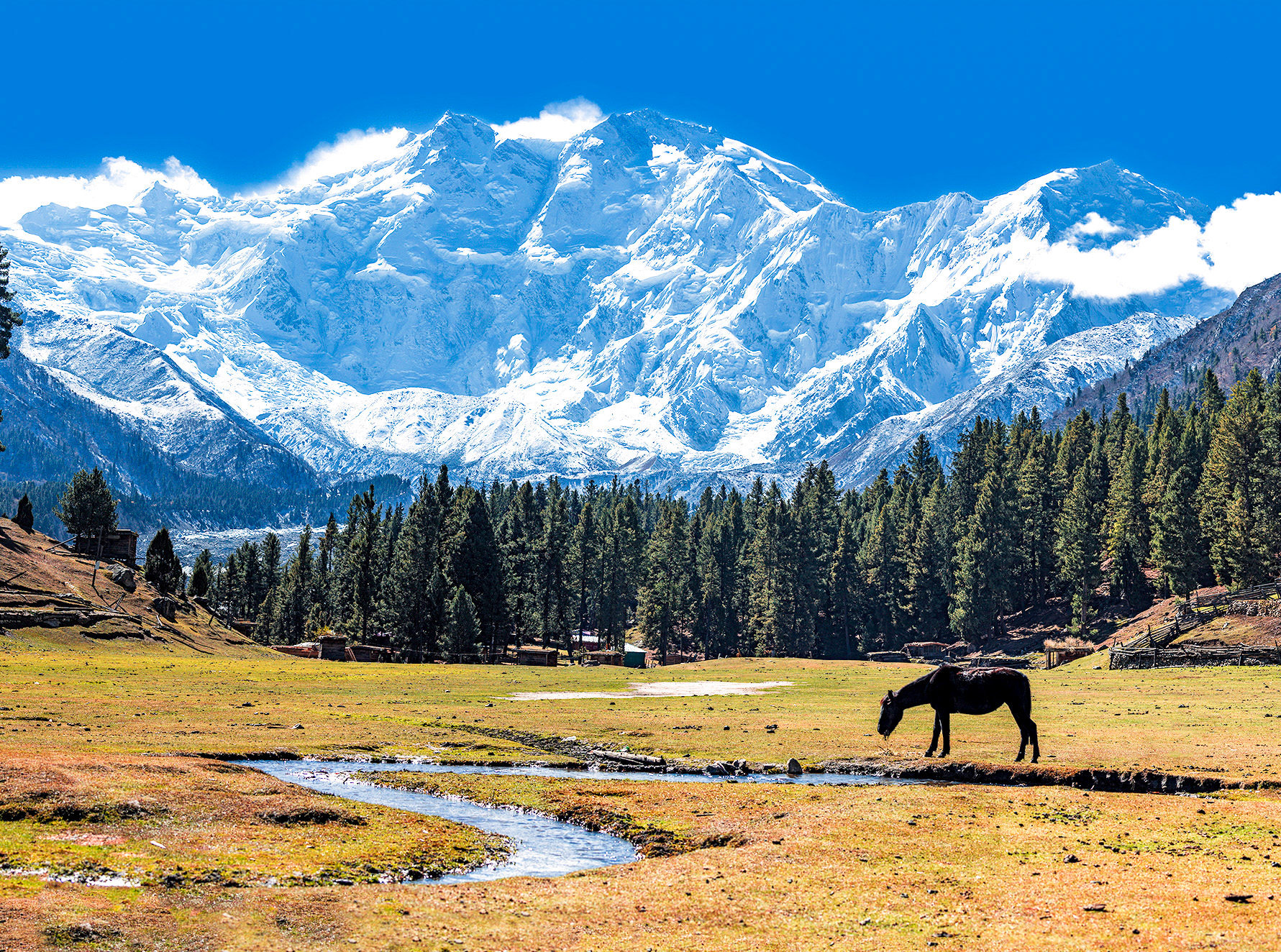
10. Mt. Annapurna in Nepal (26,545 feet/8,091 meters)
The tenth-highest peak in the world is named Mount Annapurna. The Annapurna range of peaks rises to 26,545 feet (8,091 meters), with Annapurna I being the tallest. Some of the most hazardous mountains to climb worldwide are those in the Annapurna range. They have a mortality rate of roughly 40%. The coordinates identify the precise location of the summit 28°35’45″N83°49’20″E. Six prominent peaks make up the Annapurna massif: Annapurna I (8091 m/26,545 ft), Annapurna II (7937 m/26,040 ft), Annapurna III (7555 m/24,786 ft), Annapurna IV (7525 m/24,688 ft), Gangapurna (7455 m/24,457 ft), and Annapurna On June 3, 1950, Maurice Herzog and Louis Lachenal made their maiden ascent.
11. Gasherbrum (Kashmir under Pakistani administration) – 8,080 m (26,510 ft)
The Gasherbrum mountain range is a secluded cluster of peaks in the Karakoram mountain range. For ardent mountaineers, Gasherbrum—which means brilliant wall—is sometimes referred to as K5. This impressive summit is the fifth-highest mountain peak in the Karakoram mountain range, primarily concealed from view. It is one of the least climbed eight-thousanders in the world because of its splendid isolation. Due to its isolation, the only way to reach it is across the Karakoram mountain range, the second-tallest mountain range in the world.
12. K4 (China and Pakistan), 8,080 m (26,510 ft)
K4, referred to as Gasherbrum 2, is the world’s thirteenth-highest peak. Austrian expedition teams made the peak’s first ascent in 1956, reaching a height of 8,035 meters above sea level. This summit belongs to the Karakoram mountain ranges, as indicated by the K in the K4 moniker. K 4 is the third-highest mountain in the Gasherbrum group of peaks, and because of its prominence at a high altitude, it is also included in Gasherbrum 2.
13. Broad Peak (8,051 m) between Pakistan and China (26,414 ft)
Broad Peak is the second-highest mountain in the world, often known as K3. Several Austrian expedition parties submitted it in June 1957 at 8,051 meters above sea level. The Broad peak is 8 kilometers from K2 and is situated in the Karakoram mountain ranges, which border Pakistan and China. With a top area of 1.5 km2, Broad Peak is a portion of the Gasherbrum massif in Baltistan.
14. Shishapangma (TIbet) – 8,027 m (26,335 ft)
Shishapangma is the fourteenth highest mountain in the world and is located entirely in the Tibetan area. Shishapangma, at 8,027 meters above sea level, is the ideal first of the eight-thousanders for any beginner hoping to climb all eight-thousanders. This easy ascent is followed by a quick approach to base camp, making for a gratifying climb. The spring season is the ideal time to climb this mountain because the location is completely inaccessible during the winter because of the heavy snowfall.
15. Gyachung Kang (Nepal and China) – 7,952 m (26,089 ft)
The fifteenth tallest mountain in the world dominates the Mahalangur Himal region of the Himalayas. Between Cho Oyu and Mount Everest, Gyachung Kang is at rest. The peak’s relative obscurity is partly because it does not belong to the group of summits known as the “8 Thousanders.” Gyachung Kang, which extends across parts of China and Nepal, was first scaled by a Japanese expedition team in 1964. It is the highest peak in the world that isn’t an eight-thousander, despite its relative obscurity.
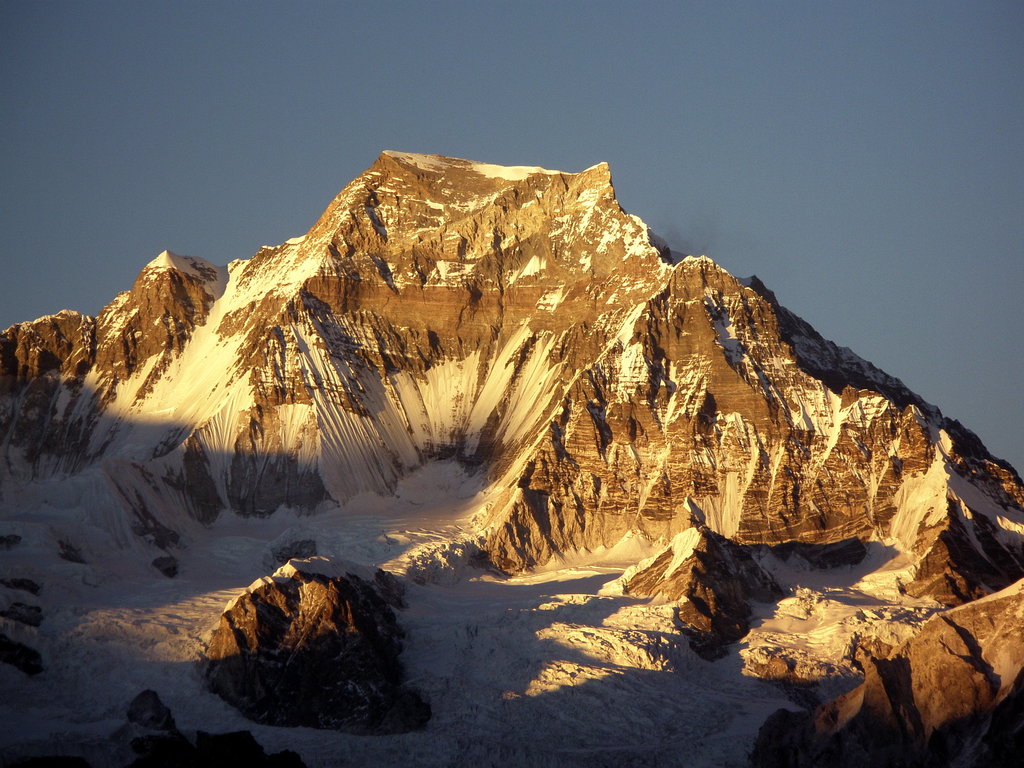
Measurement or Point of View Is Everything
Mountains have traditionally only been measured in terms of their height above sea level. Still, through research and time, we have come to understand that additional aspects might affect how tall a mountain is. A mountain may also be measured from base to peak, making Mauna Kea the highest mountain in the world, or it can be measured from the center of the Earth and the nearest point to the moon, making Chimborazo the tallest mountain in the world.
There are how many different kinds of mountains in the world?
There are several different types of mountain formations.
- Volcanic Mountains
- Fold Mountains
- Block Mountains
- Residual Mountains
- Dome Mountains
Below are details about each type of mountain.
1. Volcanic Mountains: Mountains are created due to the eruption of volcanoes and the movement of tectonic plates. Because the ejected material from a shield volcano, mainly basalt, has a low viscosity, the cone is gently sloping. Mauna Loa is a typical example of a slope of 4°–6°.
Due to the increased viscosity of the material released during eruptions, the composite volcano, also known as a stratovolcano, has a steeper rising cone (33°–40°), and its eruptions are more powerful and less frequent than those of shield volcanoes.
A belt encircling the Pacific Ocean is home to most volcanic mountains. They are referred to as the Pacific Ring of Fire together. Shield volcanoes or stratovolcanoes are the most well-known volcanic mountains. Vesuvius and Mount Fuji are examples of stratovolcanoes, whereas Mauna Loa in Hawaii is an example of a shield volcano.
2. Fold Mountains. When two or more of Earth’s tectonic platesEarthforced together, fold mountains are formed. Rocks and debris are bent and folded into rocky outcrops, hills, mountains, and the whole mountain ranges at these interacting, compressing limits.
3. Block Mountains: Block mountains are created when a fault block is raised. Horsts, or higher blocks, are referred to as grabens or troughs. When the surface is stretched out, tensional forces build up, and the center block falls when this tension forces separate. The Sierra Nevada Range in the United States serves as an illustration of this.
4. Residual mountains: Remaining mountains are created by the erosion of an elevated region. As an alternative, these structures are often referred to as mountains of denudation. Examples of residual mountains are the Scottish Highlands, the Scandanavian Mountains, and the Balkan Peninsula’s landmass.
5. Dome mountains: To create a spherical bulge in the crust, huge magma globules must float up from beneath the crust and push up rocks on the top. A concrete dome of the more challenging rock is formed beneath the surface when the lava cools; this rock is occasionally exposed to erosion.
How Important Mountains Are
- The biodiversity, clean water, research, cultural diversity, recreation, scenery, and spiritual advantages of mountains make them highly valued.
- Mountsrucial in delivering renewable energy to downstream towns and isolated mountain villages.
- Beca, mainly through hydropower, solar electricity, wind power, and biogas, acts as significant headwaters for several rivers and other freshwater sources and are referred to as natural “water towers.”
- Snowmelt produces streamflow, eventually finding its way into streams, rivers, lakes, and oceans, where it becomes fresh water. Rehydrating aquifers is another application for this meltwater.
- They aid in reducing the wind’s velocity.
- The wind blows up the steep slopes, carrying air and clouds.
- As the air pressure keeping them in increases, warm, moist air masses travel up and over a mountain swell.
- Mountain destinations entice visitors for various reasons, including the weather, clean air, distinctive landscapes and flora, aesthetic appeal, local culture, history, and tradition, as well as the opportunity to experience snow and engage in winter sports.
Conclusion
One-fifth of the world’s area is made up of mountains, and at least one-tenth of all people live there. Mountains are often measured in heights above sea level. Mount Everest in the Himalayas is the highest point on land globally. It is 29,036 feet (8,850.1728 metres) tall. Olympus Mons, a mountain on Mars, is the highest mountain in the solar system.


